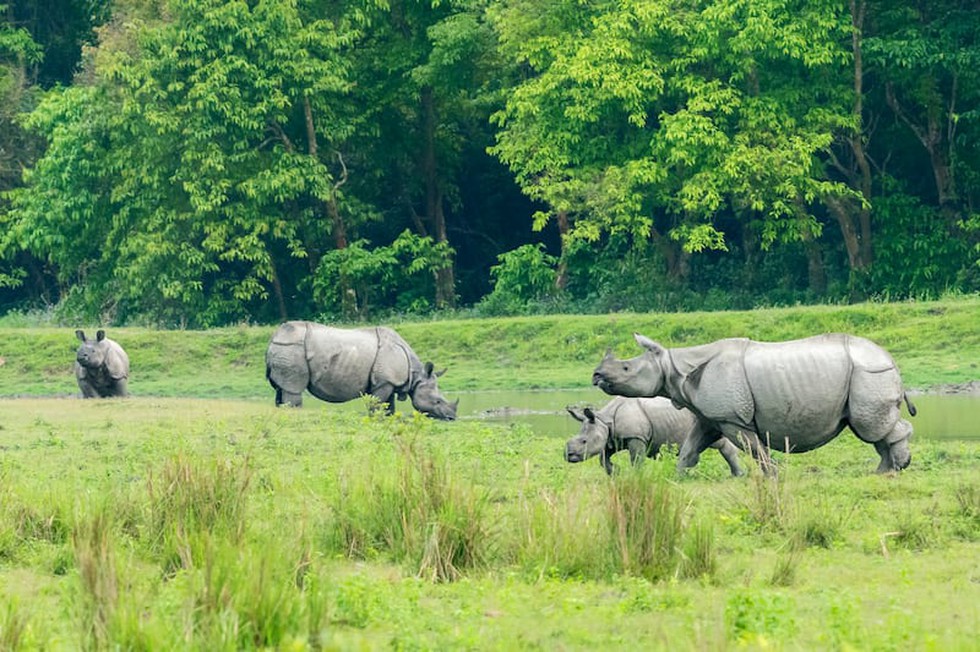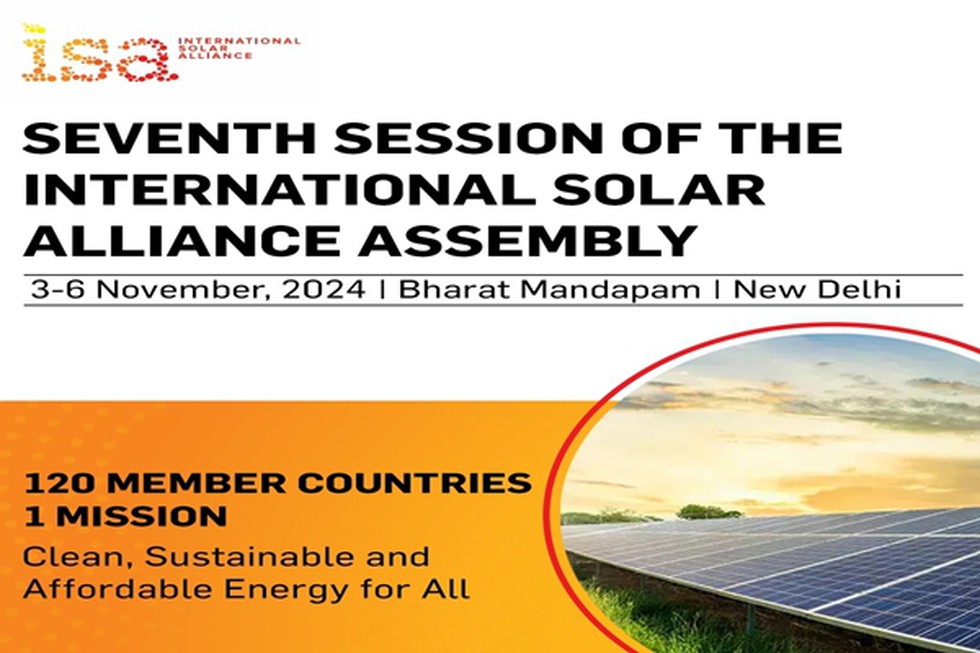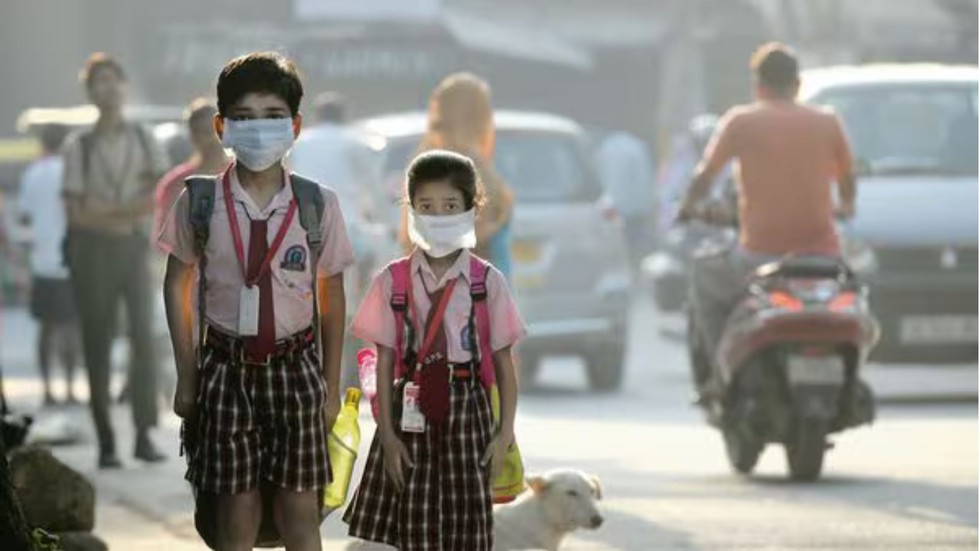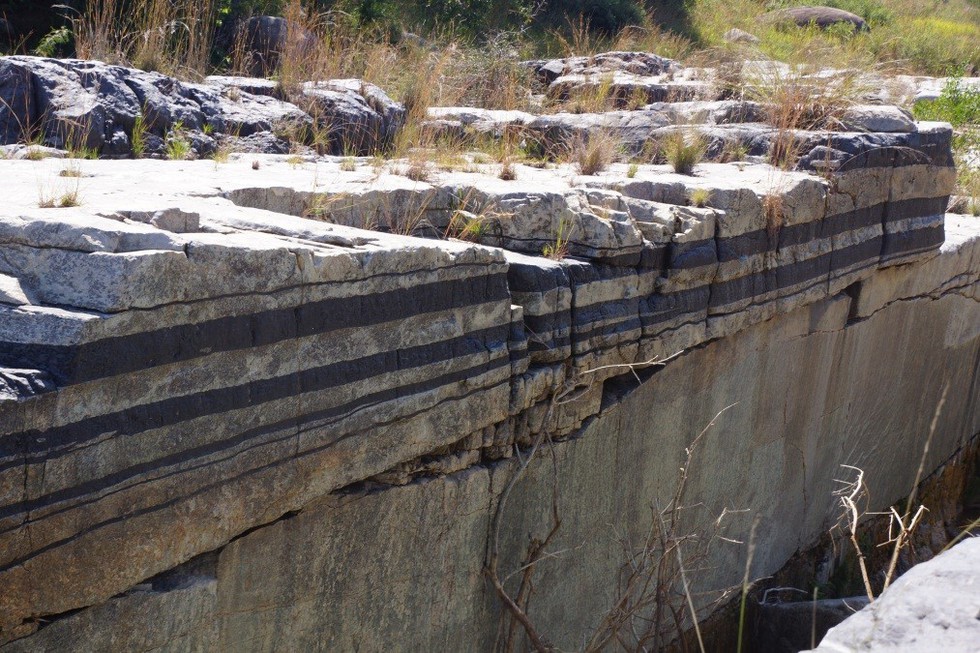
About SAMARTH Scheme:
- The Scheme for Capacity Building in Textiles Sector (SAMARTH) is a demand-drivenand placement-oriented umbrella skilling programme.
- Aim: It aims to incentivize and supplementthe efforts of the industry in creating jobs in the organized textile and related sectors, covering the entire value chain of textiles, excluding Spinning and Weaving.
- In addition to the entry-level skilling, a special provision for upskilling/ re-skilling programme has also been operationalized under the scheme towards improving the productivity of the existing workers in the Apparel & Garmenting segments.
- Under this scheme skilling programme is implemented through the following Implementing Agencies:
- Textile Industry.
- Institutions/Organizations of the Ministry of Textiles/State Governments having training infrastructure and placement tie-ups with the textile industry.
- Reputed training institutions/ NGOs/ Societies/ Trusts/ Organizations/ Companies /Start-Ups / Entrepreneurs active in the textile sector having placement tie-ups with the textile industry.
- Nodal Ministry:Ministry of Textiles.
2. Kaziranga National Park

About Kaziranga National Park:
- It is situated in the north-eastern part of the country in the districts of Golaghat and Nagoan in the state of Assam.
- It is the single largest undisturbed and representative area in the Brahmaputra Valley floodplain.
- In 1985, the park was declared a World Heritage Site by UNESCO.
- Rivers: The river Diffalu, a tributary of the Brahmaputra, flows through the National Park area (core/critical tiger habitat), while another tributary, Moradifalu, flows along its southern boundary.
- Landscape: It is of sheer forest, tall elephant grass, rugged reeds, marshes, and shallow pools.
- Flora:
- It is primarily famous for its dense and tall elephant grasses intermixed with small swamplands.
- It also includes an abundant cover of water lilies, water hyacinths and lotus.
- Rattan Cane, a type of climbing palm, is also found here.
- Fauna: Many endangered and threatened species like Rhino, Tiger, Eastern swamp deer, Elephant, Buffalo, Hoolock gibbon, Capped langur, and Gangetic River dolphin are commonly found in the habitat.
- It is inhabited by the world's largest population of one-horned rhinoceroses, as well as many mammals.
3. Drugs Technical Advisory Board

About Drugs Technical Advisory Board:
- It is the highest statutory decision-making body on technical matters related to drugs in India.
- It is established as per the Drugs and Cosmetics Act, 1940.
- It is part of the Central Drugs Standard Control Organization (CDSCO).
- Function:It advises the Central Government and the State Governments on technical matters arising out of the administration of the Drugs and Cosmetics Act, of 1940 and to carry out the other functions assigned to it by this Act.
- Nodal Ministry:Ministry of Health and Family Welfare.
What is new drug?
- According to Rule 122 E of the Drug and Cosmetic Rules 1945, a new drug can be one which has not been used in the country and has not been recognised as effective and safe by the licensing authority for the proposed claims.
- It could also be an approved drug with modified or new claims including indications, dosage, and new route of administration.
- If brought into the new drug bracket, the manufacturing, marketing, and sale of antibiotics will be documented.
- Also, the manufacturing and marketing clearance will have to be obtained from the Central government instead of State drug administration, and patients will be able to buy antibiotics only on prescription.
4. International Solar Alliance Assembly

About International Solar Alliance Assembly:
- It is the apex decision-making body of International Solar Alliance (ISA), representing each Member Country.
- This body makes decisions concerning the implementation of the ISA’s Framework Agreement and coordinated actions to be taken to achieve its objective.
- Functions: The Assembly deliberates matters of substance, such as the selection of the Director General, the functioning of ISA, approval of the operating budget, etc.
- It meets annually at the ministerial level at the ISA’s seat.
- It assesses the aggregate effect of the programmes and other activities in terms of deployment of solar energy, performance, reliability, cost and scale of finance.
- Members: 120 countries are signatories to the ISA Framework Agreement, of which 102 countries have submitted the necessary instruments of ratification to become full members of the ISA.
- The Republic of India holds the office of the President of the ISA Assembly, with the Government of the French Republic as the co-president.
- The Seventh Session of the ISA Assembly will deliberate on initiatives of ISA that impact energy access, security, and transitions with a focus on:
- Empowering Member Countries to adopt solar energy as the energy source of choice
- Make energy access universal by supporting solar entrepreneurs to scale up local solutions
- Mobilise finance to speed up solar deployment
What is the International Solar Alliance?
- It was formed at the 21st Conference of Parties (COP21) to the United Nations Framework Convention on Climate Change (UNFCCC) held in Paris in 2015.
- It is an action-oriented, member-driven, collaborative platformfor increased deployment of solar energy technologies.
- Headquarter:National Institute of Solar Energy (NISE) in Gurugram, India.
5. West Nile virus

About West Nile virus:
- West Nile Virus (WNV) is a member of the flavivirus genus and belongs to the family Flaviviridae.
- It was first isolated in a woman in the West Nile district of Uganda in 1937.
- It is commonly found in Africa, Europe, the Middle East, North America and West Asia.
- According to the World Health Organization (WHO), it typically spikes between the summer and autumn months of June and September.
- Transmission: Human infection is most often the result of bites from infected mosquitoes. Mosquitoes become infected when they feed on infected birds, which circulate the virus in their blood for a few days.
- The virus may also be transmitted through contact with other infected animals, their blood, or other tissues.
- Symptoms:
- Infection with WNV is either asymptomatic (no symptoms) in around 80% of infected people, or can lead to West Nile fever or severe West Nile disease.
- About 20% of people who become infected with WNV will develop West Nile fever and symptoms include fever, headache, tiredness, and body aches, nausea, vomiting, occasionally with a skin rash.
- So far, 19 countries, including Albania, Austria, Bulgaria, Croatia, Cyprus, Czechia, France, Germany, Greece, Hungary, Italy, North Macedonia, Romania, Serbia, Slovakia, Slovenia, Spain and Türkiye and Kosovo have reported outbreaks.
- Treatment: No vaccine is available for WNV and only supportive treatments can be provided to neuroinvasive WNV patients.
6. Graded Response Action Plan (GRAP)?

About Graded Response Action Plan (GRAP):
- GRAP is a framework designed to combat air pollution in the Delhi-NCR region.
- It was introduced as an emergency response mechanism, and its implementation is triggered when the Air Quality Index (AQI) reaches "poor" levels.
- GRAP is particularly important during the winter months when air quality tends to plummet.
- Who implements GRAP?
- The Commission for Air Quality Management (CAQM) in NCR and adjoining areas oversees the implementation of GRAP.
- It collaborates with the Ministry of Environment, Forest and Climate Change (MoEFCC).
- The CAQM has constituted a sub-committee for the operationalization of the GRAP.
- This body includes officials from the CAQM, member secretaries of pollution control boards of Uttar Pradesh, Delhi, Haryana, Rajasthan, the Central Pollution Control Board, a scientist from the IMD, one from the IITM, and a Health Advisor.
- The sub-committee is required to meet frequently to issue orders to invoke the GRAP.
- The orders and directions of the CAQM will prevailin case of any conflict between directions issued by the State governments and the CAQM.
- Different stages of GRAP: GRAP consists of four stages, each with targeted actions to be taken by the necessary authorities and agencies. These are the following:
- Stage I: "Poor" air quality (Delhi AQI: 201-300)
- Stage II: "Very Poor" air quality (Delhi AQI: 301-400)
- Stage III: "Severe" air quality (Delhi AQI: 401-450)
- Stage IV: "Severe+" air quality (Delhi AQI > 450)
What is the Air Quality Index (AQI)?
- AQI is issued by government agencies to gauge air pollution levels and communicate risks to the public.
- It indicates how air pollution can affect health, with higher AQI values indicating more severe health concerns.
- The AQI is calculated based on air pollutant concentrations over a specific period, and the results are categorised into ranges with corresponding health advisories.
- According to the AQI scale, the air quality check between 0 and 50 is "Good", 51 and 100 "Satisfactory", 101 and 200 "Moderate", 201 and 300 "Poor", 301 and 400 "Very Poor", 401 and 450 "Severe" and over 450 as "Severe +".
7. What is Kaizen?

About Kaizen:
- Kaizen is a compound of two Japanese words that together translate as "good change" or "improvement."
- Kaizen is a Japanese business philosophy that encourages continuous improvement involving employees at all levels of a company.
- The concept of kaizen encompasses a wide range of ideas.
- Those include making the work environment more efficient by creating a team atmosphere, improving processes and procedures, ensuring employee engagement, and making jobs more fulfilling, less tiring, and safer.
- The goal of Kaizen is to make small changes over a period of time to drive continuous improvement within a company.
- The Kaizen process recognizes that small changes now can add up to huge impacts in the future.
- Ultimately, that can mean better quality control, more efficient processes, and the elimination of waste, among other benefits.
- Under Kaizen, improvements can be initiated by any employee at any time.
- The philosophy is that everyone has a stake in the company's success, and everyone should strive, at all times, to help make the business better.
8. What is Third-Party Litigation Funding (TPLF)?

About Third-Party Litigation Funding (TPLF):
- TPLF, often referred to as litigation finance, is a financial arrangement in which a third party (with no prior connection to the litigation) in a legal dispute provides funding to support the plaintiff's pursuit of a legal claim.
- In return, the third-party funder receives a portion of the proceeds if the case is successful.
- Plaintiffs do not have to repay the funding if their lawsuit is not successful.
- This funding model allows entities to bring lawsuits without shouldering the financial risks associated with litigation.
- The emergence of TPLF has been driven by various factors, including the escalating costs of legal proceedings, the complexity of modern litigation, and the desire to level the playing field between parties with disparate financial resources.
- Disputes that attract TPLF generally include commercial contracts, international commercial arbitration, class action suits, tortious claims like medical malpractice and personal injury claims, anti-trust proceedings, insolvency proceedings, and other like claims that have a calculated chance of resulting in a substantial monetary award.
- TPF is not expressly prohibited in India. In fact, several judgments highlight its benefits and express that there is a need for its regulation.
9. Battle of Walong

About Battle of Walong:
- Set during the 1962 Sino-Indian War, it occurred at the easternmost tip of Arunachal Pradesh, near the tri-junction of India, China, and Myanmar.
- As Chinese forces launched a full-scale offensive, Indian troops were tasked with defending Walong, the only advanced landing ground in the region, a vital supply route that connected remote border posts.
- After Tawang, Walong was China’s main offensive in the eastern sector during the war.
- The Chinese had overwhelming numbers on their side—an estimated 15,000 soldiers to India’s 2,500, accompanied by superior weaponry and artillery.
- Yet, despite being heavily outnumbered and outgunned, Indian soldiers displayed remarkable resolve.
- The Indian Army units involved included battalions from the Kumaon Regiment, Sikh Regiment, Gorkha Rifles, Assam Rifles, and Dogra Regiment.
- Their tenacity and courage managed to hold back the Chinese advance for nearly three weeks, despite dire shortages of ammunition and supplies.
- The battle resulted in significant losses for India, with around 830 soldiers either killed, wounded, or captured.
- Yet, their defence stands as a powerful symbol of the valour and sacrifice of the Indian Army.
- It went down in history as the only Indian counterattack during the 1962 war.
10. Bushveld Igneous Complex

About Bushveld Igneous Complex (BIC):
- It is the largest layered igneous intrusion within the Earth's crust.
- It is located in northern South Africa, exposed at the edge of the Transvaal Basin.
- It covers a pear-shaped area of over 66,000 sq.km.
- The complex varies in thickness, sometimes reaching 9 kilometres (5.6 mi) thick.
- It is renowned for containing some of the richest ore deposits.
- The complex contains the world's largest reserves of platinum-group metals (PGMs), i.e., platinum, palladium, osmium, iridium, rhodium, and ruthenium, along with vast quantities of iron, tin, chromium, titanium, and vanadium.
- BIC is divided into an eastern and western lobe, with a further northern extension. All three sections of the system were formed around the same time, about 2 billion years ago.
- Formation:
- Vast quantities of molten rock from the Earth's mantle were brought to the surface through long vertical cracks in the Earth's crust, creating the geological intrusion known as the BIC.
- The effects of these injections of molten rock over time, combined with the crystallisation of different minerals at different temperatures, resulted in the formation of a structure rather like a layered cake consisting of distinct rock strata including three PGM-bearing layers, referred to as reefs.


























































































































































.png)
.png)
.png)
.png)
.png)


.png)
.png)
.png)





.png)
.png)






.png)
.png)
.png)
.png)
.png)
.png)
.png)
.png)
.png)

.png)







.png)
.png)


.png)
.png)
.png)


.png)

.png)
.png)





.jpg)

.png)
.png)


.png)

.png)
.png)
.png)

.jpg)

.jpg)


.png)

.png)
.png)
.png)
.png)
.png)
.png)
.png)
.png)
.png)
.png)




.png)

.png)





.png)
.png)
.png)
.png)
.png)
.png)
.png)
.png)
.png)
.png)
.jpg)
.jpg)

.png)
.png)
.png)
.png)
.png)
.png)
.png)
.png)
.png)
.png)
.png)
.png)
.png)
.png)
.png)
.png)
.png)
.png)
.png)
.png)
.png)
.png)



.png)
.png)

.jpg)
.jpg)


.jpg)
.jpg)
.jpg)
.jpg)
.jpg)

.jpg)








.jpg)
.jpg)
.jpg)
.jpg)
.jpg)

















.jpg)
.jpg)







.jpg)


















.jpg)
.jpg)






























































































.jpg)
.jpg)


























.jpg)

.jpg)










.jpg)








.jpg)




.jpg)










.jpg)


















.jpg)












































.jpg)














.jpg)
.jpg)
.jpg)





.jpg)

.jpg)
.jpg)





































































.jpg)


































.jpg)
.jpg)
















































.jpg)












.jpg)


.jpg)




.jpg)
.jpg)
.jpg)

.jpg)
.jpg)
.jpg)
.jpg)

.jpg)
.jpg)
.jpg)

.jpg)
.jpg)
.jpg)
.jpg)
.jpg)
.jpg)
.jpg)
.jpg)

.jpg)


.jpg)
.jpg)
.jpg)
.jpg)
.jpg)
.jpg)
.jpg)
.jpg)
.jpg)
.jpg)











.jpg)
.jpg)





.jpg)
.jpg)
.jpg)
























.jpg)
























.jpg)









.jpg)
.jpg)







.jpg)
.jpg)









































.jpg)
.jpg)
.jpg)
.jpg)
.jpg)

.jpg)
.jpg)
.jpg)
.jpg)
.jpg)


.jpg)
.jpg)
.jpg)
.jpg)
.jpg)

.jpg)
.jpg)
.jpg)
.jpg)
.jpg)
.jpg)
.jpg)
.jpg)
.jpg)
.jpg)
.png)

.png)
.png)

.png)
.png)
.png)
.png)


.jpg)
.jpg)

.jpg)
.jpg)
.jpg)

.png)
.png)
.png)
.png)
.png)
.png)
.png)

.png)
.png)
.png)
.png)
.png)
.png)
.png)
.png)
.png)
.png)





































































-min.png)



.png)




.png)








































